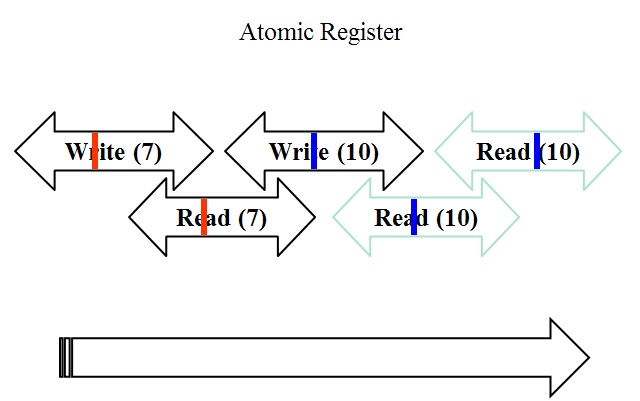Atomic semanticsAtomic semantics is a type of guarantee provided by a data register shared by several processors in a parallel machine or in a network of computers working together. Atomic semantics are very strong. An atomic register provides strong guarantees even when there is concurrency and failures. A read/write register R stores a value and is accessed by two basic operations: read and write(v). A read returns the value stored in R and write(v) changes the value stored in R to v. A register is called atomic if it satisfies the two following properties: 1) Each invocation op of a read or write operation: •Must appear as if it were executed at a single point τ(op) in time. •τ (op) works as follow: τb(op) ≤ τ (op) ≤ τe(op): where τb(op) and τe(op) indicate the time when the operation op begins and ends. •If op1 ≠ op2, then τ (op1)≠τ (op2) 2) Each read operation returns the value written by the last write operation before the read, in the sequence where all operations are ordered by their τ values. Atomic/Linearizable register: Termination: when a node is correct, sooner or later each read and write operation will complete. Safety Property (Linearization points for read and write and failed operations): Read operation:It appears as if happened at all nodes at some times between the invocation and response time. Write operation: Similar to read operation, it appears as if happened at all nodes at some times between the invocation and response time. Failed operation(The atomic term comes from this notion):It appears as if it is completed at every single node or it never happened at any node. Example : We know that an atomic register is one that is linearizable to a sequential safe register.  The following picture shows where we should put the linearization point for each operation: 
 See alsoReferences
|
Portal di Ensiklopedia Dunia













